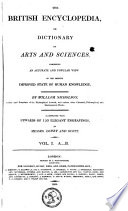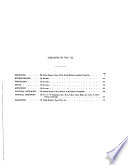 | William Nicholson - 1809 - 716 pages
...had the idea of comparing them with the powers of the numbers by which they are expressed, he found that the squares of the times of the revolutions of the planets are to each other as the cubes of their mean distances from the sun ; and that the same law applies... | |
 | William Nicholson - 1819 - 370 pages
...had the idea of comparing them with the powers of the numbers by which they are expressed, he found that the squares of the times of the revolutions of the planets are to each other as the cubes of their mean distances from the sun; and that the same law applies... | |
 | George Gregory - 1820 - 458 pages
...of a planet. The central star or sun is at S, which is one of the foci. The second law of Kepler is, that the squares of the times of the revolutions of the planets are as the cubes of their mean distances from the sun. That is, if we compare the square of the time... | |
 | Louis Eustache Ude - 1829 - 582 pages
...invention of the spinning-wheel to be more surprising than the discovery of the great laws of Nature by Kepler, that the squares of the times of the revolutions of the planets are to one another as the cubes of the great axes of thin orbits ; and Schroeter is right. As to my... | |
 | William Martin - 1832 - 504 pages
...came after Tycho, and ascertained for a certainty, that all the planets move in elliptical orbits ; that the squares of the times of the revolutions of the planets, were to one another as the circles of the greater axes of their orbits, and that their motions are... | |
 | Theodore Edward Hook - 1839 - 322 pages
...invention of the spinning-wheel to be more surprising than the discovery of the great laws of Nature by Kepler, — that the squares of the times of the revolutions of the planets are to one another as the cubes of the great axes of their orbits : — and Schroeter is right. As... | |
 | Theodore Edward Hook - 1839 - 948 pages
...invention of the spinning-wheel to be more surprising than the discovery of the great laws of Nature by Kepler, — that the squares of the times of the revolutions of the planets are to one another as the cubes of the great axes of their orbits: — and Schroeter is right. As to... | |
 | Encyclopaedia - 1845 - 902 pages
...2. The orbits or trajectories of the planets are ellipse?, having the sun in one of their focii. 3. The squares of the times of the revolutions of the planets about the sun, are to each other as the cubes of the major axes of their orbits. These laws appertain to the motion of... | |
 | Francis Fauvel-Gouraud - 1845 - 676 pages
...that the line drawn from it to the sun describes about the sun areas proportional to the times. 3. That the squares of the times of the revolutions of the planets are as the cubes of their mean distances from the sun. t The first of these satellites is at the round... | |
 | John Lee COMSTOCK (and HOBLYN (Richard Dennis)), John Lee COMSTOCK - 1846 - 506 pages
...times, 2. That the planets all move in elliptic orbits, of which the sun occupies one of the foci. 3. That the squares of the times of the revolutions of the planets are as the cubes of their mean distances from the sun. The announcement of these laws by Kepler led... | |
| |